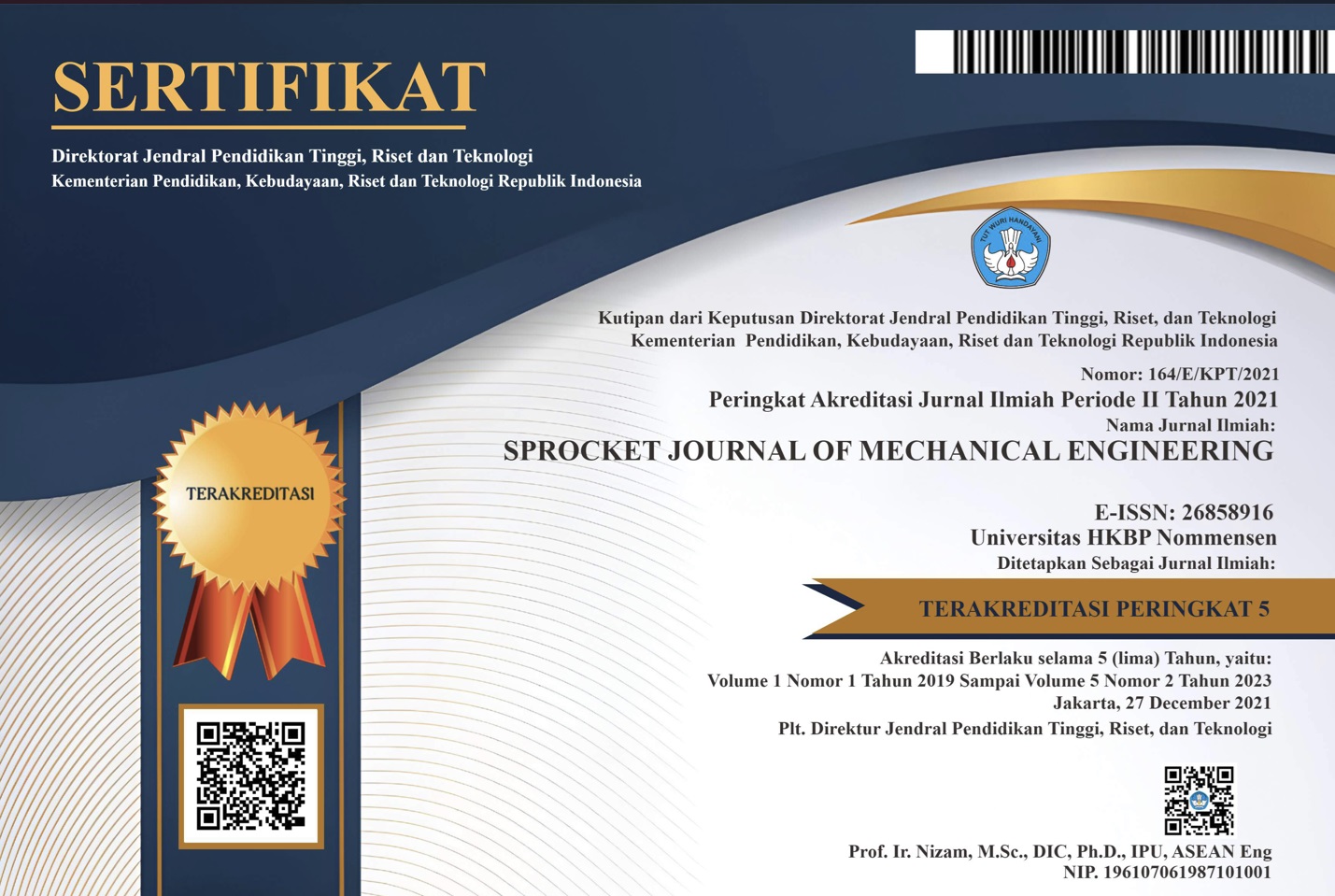Analisa Pengaruh Perubahan dan Pengaturan L/G Terhadap Range, Approach, dan Efektifitas Kinerja Menara Pendingin
Abstract
Cooling towers are critical heat exchange systems designed to lower water temperature by dissipating heat into the atmosphere. They are classified into two primary types: natural draft and mechanical draft. Natural draft cooling towers, also known as hyperbolic towers, utilize the temperature gradient between the heated water and the surrounding air to drive airflow without mechanical assistance. In contrast, mechanical draft towers incorporate large fans to enhance air circulation and improve heat dissipation. The interaction between air and water, facilitated by fill material, optimizes heat transfer efficiency by increasing contact time. Evaluating the impact of operational adjustments on key performance metrics, including thermal range, approach, and overall efficiency, is essential for enhancing cooling tower performance. Additionally, these systems can serve as refrigerant coolers in air conditioning applications. This study investigates the influence of variations in the liquid-to-gas (L/G) ratio on cooling tower efficiency, with a focus on temperature reduction, thermal range, and approach. Experimental findings demonstrate that adjustments in operational parameters significantly affect these performance indicators. Under the tested conditions, the cooling tower achieved an effectiveness of 70.94%, with a thermal range of 19°C and an approach temperature of 7.8°C.
References
efficiency of cooling tower can be critically acclaimed (A case Study),” Journal of
Engineering Research and Applications - IJERA, vol. 5, no. 4, pp. 73–79, Apr. 2015.
[2] R. S. Putra, “Analisa Perhitungan Beban Cooling Tower Pada Fluida di Mesin Injeksi Plastik,” JTM, vol. 4, no. 2,
pp. 56–62, Jun. 2015.
[3] S. Wahyu, A. Mustain, and M. A. Rizky, “ANALISA PERHITUNGAN EFISIENSI COOLING TOWER 32 T 821 PADA
UTILITAS II PRODUKSI II B PT PETROKIMIA GRESIK,” Distilat, vol. 9, no. 1, pp. 114–119, Mar. 2023, doi:
https://doi.org/10.33795/distilat.v9i1.
[4] F. Kreith, R. M. Manglik, and M. S. Bohn, Principles of Heat Transfer, 7th ed. Stamford: Cengage Learning - Global
Engineering, 2011.
[5] P. Ahluriza and N. Sinaga, “Review Pengaruh Range Dan Approach Terhadap Efektivitas Menara Pendingin Unit 2
Di PT. Indonesia Power Kamojang,” Energi dan Kelistrikan: Jurnal Ilmiah, vol.13, no. 2, pp. 141–149, Dec. 2021.
[6] H. P. Siallagan, “Analisis Kinerja Cooling Tower 8330 CT01 pada Water Treatment Plant-2 PT. Krakatau Steel
(PERSERO).TBK,” Jurnal Teknik Mesin (JTM), vol. 6, no. 3, pp. 215–219, Jun. 2017.
[7] O. Triyansah and Y. Witanto, “Efektifitas Cooling Tower Fan 6P-4051-GB di PT. Pupuk Sriwidjaja Sektor STG-BB,
Palembang Sumatra Selatan,” REKAYASA MEKANIK, vol. 4, no. 1, pp. 9–12, Apr. 2020.
[8] Ach. T. H, D. Listyadi, and H. Sutjahjono, “Analisis Beban Kalor Cooling Tower Induced Draft,” Artikel Ilmiah Hasil
Penelitian Mahasiswa Tahun 2014, pp. 1–5, 2014.
[9] Komarudin, R. Saputra, and S. Y. Baskoro, “Analisis Pengaruh Penyerapan Kalor Terhadap Efisiensi Cooling Tower
pada Tungku Induksi Pengecoran Logam di Polman Astra6t,” Bina Teknika, vol. 13, no. 1, pp. 11–21, Jun. 2017.

This work is licensed under a Creative Commons Attribution 4.0 International License.
Authors who publish with SPROCKET JOURNAL OF MECHANICAL ENGINEERING agree to the following terms:
- Authors retain copyright and grant the journal right of first publication with the work simultaneously licensed under a Creative Commons Attribution 4.0 International License . that allows others to share the work with an acknowledgment of the work's authorship and initial publication in this journal.
- Authors are able to enter into separate, additional contractual arrangements for the non-exclusive distribution of the journal's published version of the work (e.g., post it to an institutional repository or publish it in a book), with an acknowledgment of its initial publication in this journal.
- Authors are permitted and encouraged to post their work online (e.g., in institutional repositories or on their website) prior to and during the submission process, as it can lead to productive exchanges, as well as earlier and greater citation of published work (See The Effect of Open Access).






.png)
.png)


